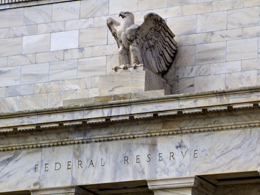 Once again, the chair of the Federal Reserve has weighed in on asset prices.
Once again, the chair of the Federal Reserve has weighed in on asset prices.
Yesterday, Janet Yellen said to Christine Lagarde, the head of the International Monetary Fund, that “equity market valuations at this point are quite high.” Her comment has prompted a certain amount of soul-searching in the media over whether Yellen should be talking about stock prices at all, whether she’s right, and, of course, what that means both for the market and for the future course of Fed actions.
Reading about this, I immediately thought of Alan Greenspan’s comments about the market in late 1996 and the famous phrase “irrational exuberance,” which later became the title of a book. Let’s review the current situation in light of what we know about the aftermath of Greenspan’s comments, when everyone was asking many of the same questions.
Should Yellen discuss the markets?
I would argue that asset prices, including stocks, are fair game for Fed commentary. Even though we don’t include asset prices in inflation calculations, they’re a real part of what drives economic decisions. If we bar the Fed from weighing in on stock prices, we should also rule out housing and similar topics. To the extent that the Fed keeps an eye on the market—as we know it does—it’s helpful to get a sense of what the members are thinking.
If you remember, Greenspan’s comments had no long-term effect on market performance, although they were predictive of what came later. In that sense, maybe we should have listened to Greenspan, and perhaps we should listen to Yellen today.
Is she right about stock prices?
Yes, I believe she is. A couple of weeks ago, I outlined why the market is expensive, based on three different metrics, noting that each of those metrics reached similar levels in 2000 and 2005–2007. Even if we look at the most optimistic of measures, the forward price/earnings ratio, we’re still at levels above 2007. If the market was expensive in 2007, it is more expensive now.
Arguably, with interest rates so low, current valuations are not that rich. But if you use metrics that don’t depend on interest rates, the market still looks very expensive.
What does this mean for the market and future Fed actions?
Looking back at Greenspan’s comments, the markets continued to rise for years afterward. Valuations got expensive in 2004 and continued to climb. Clearly, expensive does not equate to a major pullback in the short term or even the medium term. Over that time frame, Yellen’s comments probably mean nothing. But over the longer term, they highlight a problem that will eventually come into focus.
As far as future Fed actions go, I read Yellen's comment as an attempt to shift the market’s obsessive focus on the positive effects of continued low rates to some of the negative consequences. If Yellen can start to change the narrative around a rate increase, showing it as more desirable and needed—by, say, looking at asset price inflation—it will make the Fed’s job a little easier.
I suspect we’ll be hearing more about the costs of low interest rates, in an attempt to do just that.


 Print
Print


